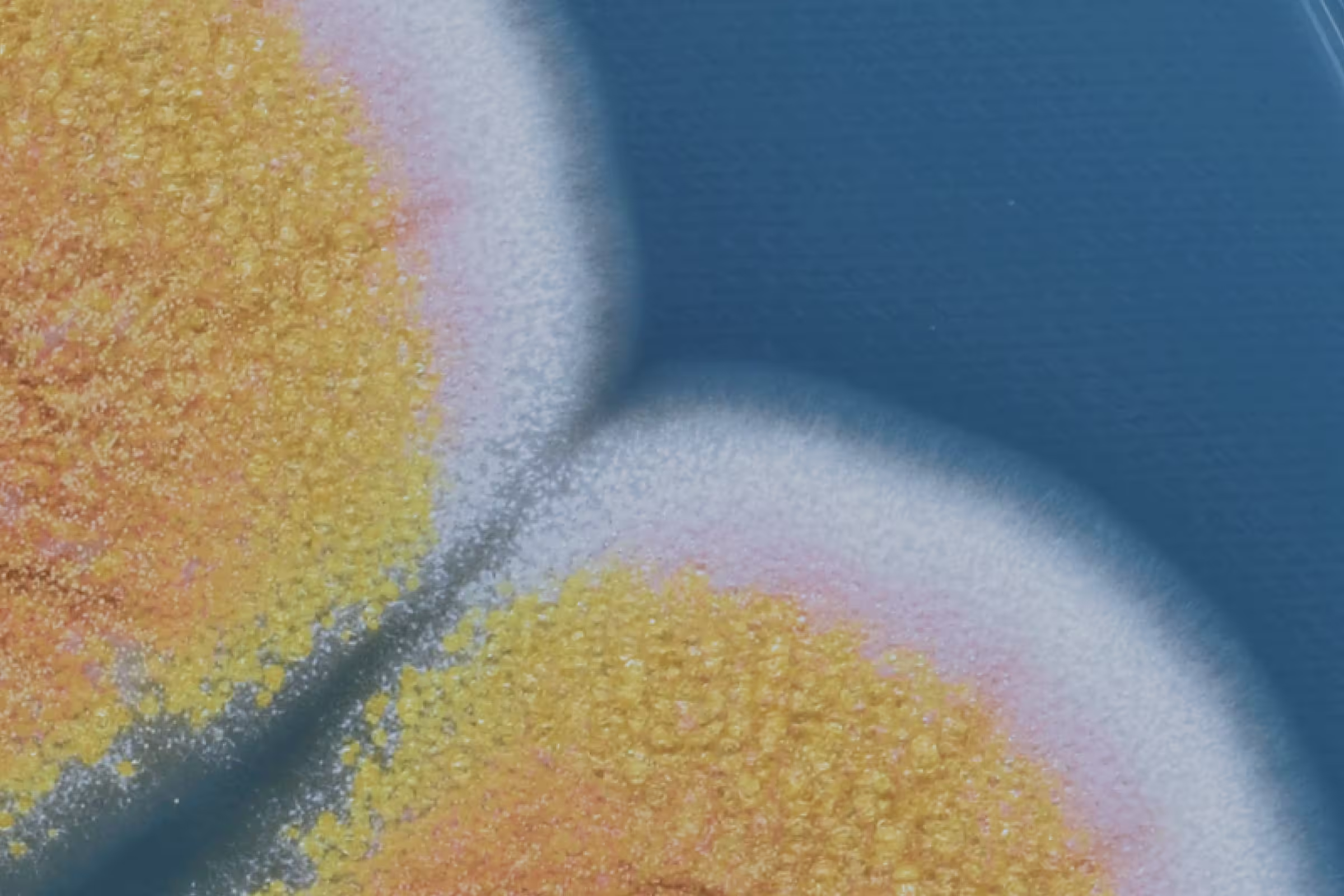

What Are the Common Causes of Vaginal Infections?
Discover the common causes of vaginal infections and simple ways to prevent them in our easy-to-follow guide.
Words by Olivia Cassano
Scientifically edited by Dr. Krystal Thomas-White, PhD
Medically reviewed by Dr. Sameena Rahman, MD
If you have a vagina, there’s a solid chance you’ll develop an infection (vaginitis) sooner or later in your life.
Up to 75% of women will experience at least one vaginal yeast infection (vaginal candidiasis) in their lifetime, and more than half will have two or more. At the same time, almost 30% of people with vaginas will develop bacterial vaginosis (BV) each year.
Your vaginal microbiome is constantly adapting to whatever life throws at it. Usually, it does a great job of maintaining a healthy balance. However, hormonal changes, sex, and certain medications can disrupt this balance and lead to burning, irritation, and unusual vaginal discharge.
Understanding the causes and triggers can help you take steps to prevent them and manage them effectively when they show up. Let’s dive into the science behind the most common cause of vaginal infections.
Understanding the vaginal microbiome
Fundamentally, vaginal infections happen when a certain type of bacteria or fungi overgrow and cause an imbalance in the vaginal microbiome.
The vagina's ecosystem is home to a variety of bacteria, fungi, and other organisms that work together to create homeostasis, aka balance.
Lactobacillus — healthy bacteria — are especially important. They play a big role in keeping your vagina healthy and preventing infection. Even the smallest shift in your vaginal microbiome can throw things off-kilter. An imbalance of the vaginal microbiome is known as vaginal dysbiosis.
Dysbiosis can happen when there aren't enough protective bacteria like Lactobacillus in your vaginal microbiome, allowing not-so-friendly bacteria like Gardnerella vaginalis, or fungi like Candida albicans to overgrow.
Dysbiosis can lead to infections like bacterial vaginosis, vaginal yeast infections, and others, bringing along vaginitis symptoms such as itching, burning, irritation, and abnormal discharge.
But having too much Lactobacillus isn’t great either and can cause unwanted symptoms. An overgrowth of Lactobacillus can cause a (less common) vaginal infection called cytolytic vaginosis.
The key is to keep your vaginal microbiome balanced because dysbiosis can cause all sorts of vaginal infections, but what causes that imbalance in the first place? Below are some of the most common triggers for vaginal infections.
What causes vaginitis?
Sex
Sex has the potential to introduce new bacteria into the vaginal microbiome, which can upset its balance and lead to bacterial vaginosis or a vaginal yeast infection.
Having multiple sex partners has been linked to increased diversity of bacteria, raising the risk of bacterial vaginosis, and studies have shown a higher incidence of bacterial vaginosis in women with multiple sexual partners.
A new sexual partner can also bring in unfamiliar bacteria to the vaginal ecosystem. Researchers have found a connection between new sexual partners and the onset of bacterial vaginosis — regardless of whether they're male or female.
Additionally, engaging in unprotected sex can also increase the risk of bacterial imbalance. Semen is slightly alkaline, which can increase the vaginal pH, and men can carry BV-associated bacteria on their penis.
Aside from common vaginal infections, being sexually active can also increase your risk of common sexually transmitted infections (STIs) like chlamydia, gonorrhea, and trichomoniasis. Using a condom or dental dam can drastically reduce your risk of contracting a sexually transmitted infection, as well as developing a yeast infection or bacterial vaginosis.
Douching
Douching can actually do more harm than good for your vaginal health. Not only are vaginal douches unnecessary (your vagina is self-cleaning), but they can mess up the natural balance of bacteria and make symptoms worse. Several studies have shown that women who douche regularly are at a greater risk of developing BV.
The ingredients in douches like iodine, vinegar, and acetic acid are strong and can be harsh on your vagina, leading to inflammation and irritation.
Even douches that contain lactic acid, which is good for protecting against pathogens, can upset the natural balance and increase the risk of infections.
Antibiotic use
Antibiotics are designed to kill bacteria, but they don't discriminate between harmful bacteria and beneficial bacteria. This can lead to a disruption in the natural balance of bacteria in the body, including the vaginal flora.
Some studies suggest frequent antibiotic use is one of the most common causes of vaginal yeast infections in women. Yeast infections are more likely to show up after taking broad-spectrum antibiotics.
Hormonal changes
Hormone levels can have a big impact on our bodies, including our vaginal health.
Hormones act as messengers in our body, helping different parts communicate with each other. They have a major influence on nearly every part of our body, including the vagina. For example, they help keep the vagina elastic, prevent thinning of its walls, and support the growth of protective bacteria.
During your menstrual cycle, the ups and downs of hormones can affect the balance of bacteria in the vagina, making bacterial and yeast infections more likely right after their period.
Pregnancy can also bring big changes in hormone levels, particularly increased estrogen, which can alter the vaginal environment. As a result, pregnant women are more prone to yeast infections.
Taking birth control pills or hormone replacement therapy can also increase the amount of estrogen in your body. Although birth control pills don't directly cause yeast infections, they can make you more prone to them.
In menopause, decreasing estrogen levels can lead to a decrease in lactobacilli, which can alter the vaginal microbiota and make women more susceptible to infections.
Poor hygiene habits
Poor intimate hygiene can contribute to bacterial infections by creating conditions that favor bacterial overgrowth.
For example, not changing sanitary products like pads, tampons, and menstrual cups regularly can create a breeding ground for bacteria.
Therefore, maintaining proper hygiene and regularly changing period products can reduce your risk of developing a vaginal infection.
Additionally, using harsh soaps or vaginal sprays can irritate the vaginal mucosa and disrupt the bacterial balance. Mild, unscented soap is more than enough to clean your vulva.
Weakened immune system
Having a weakened immune system can increase the chance of developing vaginal infections.
The immune system plays a crucial role in keeping the balance of microorganisms in the body, including the vaginal flora. When the immune system isn't at its best, it can lead to an overgrowth of harmful microorganisms and can cause infections.
Conditions like diabetes, human immunodeficiency virus (HIV), and chronic stress can all raise your risk of getting a vaginal infection.

Recurrent symptoms? Get Evvy's at-home vaginal microbiome test, designed by leading OB-GYNs.
Symptoms of vaginal infections
Symptoms differ from one infection to the other, but some signs to look out for include:
- Gray, watery discharge with a foul or fishy odor
- Thick, white vaginal discharge that resembles cottage cheese
- Vaginal irritation and itching
- A burning sensation when you pee
- Pelvic pain
- Pain or discomfort during sex.
Sometimes, these symptoms can be caused by a sexually transmitted infection. See your healthcare provider if you're experiencing any of these symptoms. They can give you a proper diagnosis and treatment.
How to prevent vaginal infections
Sometimes vaginal infections are unavoidable, and in many cases, likely to come back even after treatment. That said, there are a few things you can do to reduce the likelihood of developing one:
- Practice safe sex: Use condoms and dental dams to reduce the risk of developing bacterial vaginosis or a sexually transmitted infection.
- Don’t douche: Avoid douching to maintain a healthy balance of vaginal bacteria.
- Have good hygiene: Regularly change sanitary products and wash your vulva with mild, unscented soap.
- Take a vaginal microbiome test: Evvy’s Vaginal Health Test uncovers over 700 bacteria and fungi, including ones missed by traditional testing.
If you experience symptoms of a vaginal infection, such as unusual vaginal discharge, itching, burning, or irritation, see your healthcare provider. Prompt treatment can help prevent the infection from getting worse.
FAQ
What causes a vaginal bacterial infection?
A vaginal bacterial infection is caused by the overgrowth of certain types of bacteria in your vagina. Sex, douching, antibiotic use, or medical conditions that weaken the immune system are all risk factors for vaginal bacterial infections.
Can a vaginal infection go away on its own?
Sometimes, yes. Vaginal infections don’t always cause symptoms, so your body might fight off the infection before you even know you have one. If you’re experiencing any unusual symptoms, though, it’s better not to wait it out. If left untreated, infections like bacterial vaginosis can increase your risk of long-term complications, such as infertility and pelvic inflammatory disease (PID).
Can a man give a woman a yeast infection?
Yes, a man can give a woman a vaginal yeast infection during sex if he has an active yeast infection. Even if he doesn’t have a yeast infection, sex itself is a risk factor for recurrent yeast infections.





